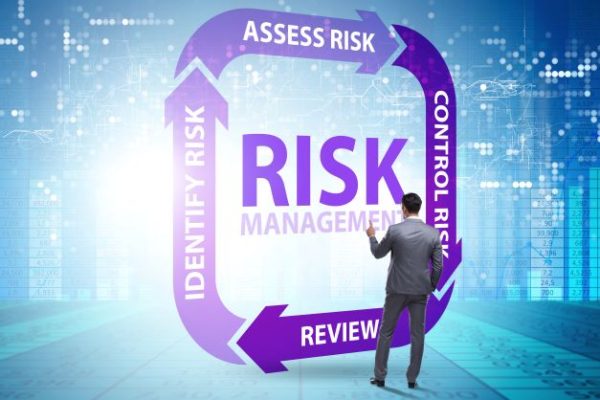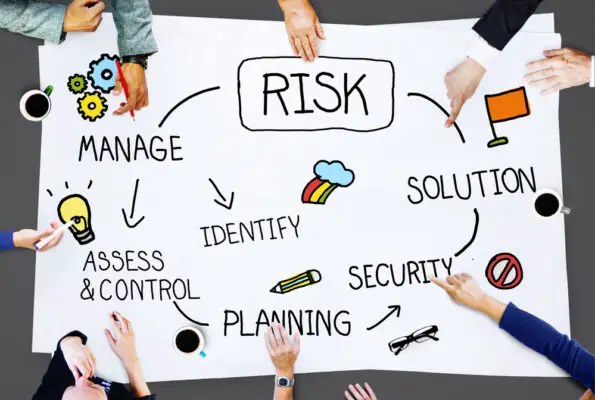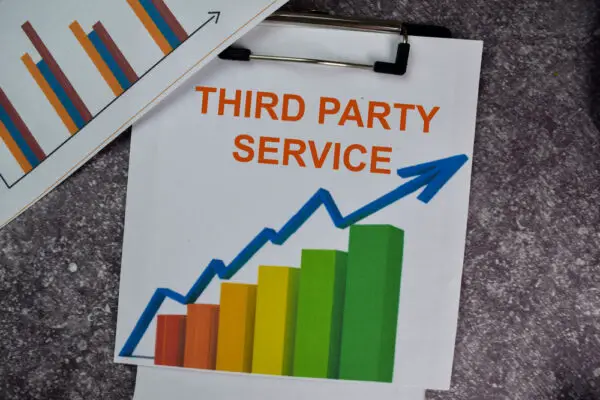Third-party risks have become a growing concern for businesses of all sizes and industries. With the increasing reliance on outsourcing, partnerships, and supply chain management, third-party vendors and suppliers have become critical components of a business’s operations.
However, as businesses expand their networks to include third-party relationships, they also expose themselves to various risks, including financial, reputational, operational, and compliance risks.
To mitigate these thirdparty risk management lifecycle risks, businesses need to adopt a structured approach to third-party risk management. This approach should encompass the entire lifecycle of third-party relationships, from identification pre-contract risk management to continuous improvement of structured third-party offboarding.
This article will explore the essential blueprint for businesses to manage third-party risks effectively. Key performance indicators that have point-in-time monitoring of one-time risk assessment. Compliance reporting of the real risk begins for supplier risks.
We will discuss the key stages of the third-party risk management lifecycle, including identifying third-party risks, assessing and prioritizing risks, and mitigating risks through controls and contractual agreements.
Also, monitoring and reviewing third-party relationships and continuous improvement and adaptation of the third party lifecycle third-party risk management strategies.

Identifying Third-Party Risks for thirdparty risk management lifecycle
Identifying potential risks posed by external entities involved in business operations remains crucial in enhancing an organization’s overall risk management framework.
The third-party risk management lifecycle is an essential blueprint outlining the steps for identifying and managing third-party risks.
The process involves conducting a thorough third-party risk assessment, which helps organizations identify the inherent risk of engaging with external parties.
The third-party risk assessment process requires organizations to evaluate the nature of the third party contracts third-party relationships, the services or products provided by the third party, and the level of access granted to the third party.
The assessment should also consider the geographic location of the two third party suppliers and the regulatory environment in which they operate.
These factors help organizations identify the potential risks associated with engaging with external parties, including reputational, financial, and legal risks.
Furthermore, identifying potential third-party risks helps organizations develop effective risk mitigation strategies. Organizations can implement controls to manage third-party risks, such as monitoring and reporting requirements, contract provisions, and regular audits.
Third-party relationships may present potential risks that can damage an organization’s operations. To protect against these risks, organizations can take proactive steps to minimize their impact.
This can include developing strategies for mitigating the risks and implementing methods for monitoring any changes in the vendor relationship. Organizations can ensure their operations remain safe and secure by staying alert and taking the necessary precautions.
Third-party risk assessment
Assessment and prioritization of potential risks is crucial to an effective risk management strategy. It enables businesses to identify, analyze, and manage the potential risks that may threaten their operations.
In the context of the entire third party lifecycle third-party risk management lifecycle, it is essential to conduct regular third-party risk assessments to identify and evaluate the potential risks posed by third-party service providers.
The risk assessment process should be based on the business’s overall risk appetite and risk tolerance and should consider factors such as the nature of the other third party ecosystem third-party relationship, the type of services provided, and the level of access to sensitive data.
Focus on the risk appetite and risk tolerance of the business, the risk assessment process can be optimized. This includes considering the type of relationship with a third third party vendor, the services offered, and the level of access to sensitive data.
They assets and prioritize third-party risks; businesses should conduct a risk-based due diligence. Overall, effective assessment and prioritization of third-party risks are critical to the success of a business’s risk management strategy.
Mitigating Risks through Controls and Contractual Agreements
Mitigating potential risks through implementing robust controls and contractual agreements is an effective strategy for ensuring business continuity information security and safeguarding against potential threats.
The third-party risk management lifecycle involves a thorough assessment of risks and prioritization based on the impact on the organization. Once risks have been identified, appropriate controls must be implemented to minimize the likelihood of their occurrence.
A critical aspect of mitigating risks through controls is ensuring they align with the organization’s risk tolerance. This is achieved by prioritizing controls based on their effectiveness in reducing the risk and cost implications.
It is essential to balance risk mitigation and the cost of implementing controls to ensure the residual risk is acceptable. The residual risk is the risk that remains after controls have been implemented, and it is critical to ensure that it is at an acceptable level.
Contractual agreements inherent third party risks are another critical aspect of mitigating risks. The agreements should include provisions that hold third-party vendors accountable for any losses that may arise due to their actions.
The agreements should also include clauses that specify the scope of the vendor’s obligations and the penalties for failure to meet the obligations. By using service level agreements including these provisions, organizations can ensure that their vendors know their responsibilities and are held accountable if they fail to meet them.
Mitigating risks through controls and contractual agreements is essential for organizations to ensure business continuity and safeguard against potential threats.

Monitoring and Reviewing Third-Party Relationships
Monitoring and reviewing the relationships with external entities is crucial for ensuring ongoing compliance and identifying any potential risks that may arise. This is an important aspect of the third-party and risk management process and lifecycle, which involves a series of steps to mitigate risks associated with third-party relationships.
Ongoing monitoring involves continuously assessing third-party relationships to ensure they remain consistent with the organization’s expectations and objectives.
Post-contract monitoring is an essential component of ongoing monitoring, as it provides an opportunity to review the terms and conditions of the agreement and ensure that the third party is meeting its obligations. This post contract monitoring process involves periodic assessments of the third party’s performance, evaluating the effectiveness of the controls, and identifying any potential issues that may arise.
The results of these assessments can be used to modify the contract terms or terminate the relationship if necessary.
As third-party relationships grow, monitoring and reviewing them becomes even more critical. This is because the risks associated with these relationships can change over time, and it is essential to identify and mitigate them before they cause harm to the organization.
By conducting ongoing monitoring and post-contract reviews, organizations can proactively manage third-party risks and ensure that their relationships with external entities remain compliant with regulatory requirements and aligned with their business objectives.
Continuous Improvement and Adaptation of Third-Party Risk Management Strategies
Effective third-party risk management demands perpetual strategy optimization, including regular policy refinement and procedure alteration to address dynamic risks and organizational needs.
Key elements include continuous monitoring of key risk indicators to detect risk exposure changes and facilitate proactive measures and risk reassessments to evaluate management effectiveness and identify gaps.
Regular reviews and adjustments of risk management policies ensure their efficacy in managing third-party risks. Thus, continuous improvement and strategic adaptation are vital to staying ahead of emerging risks and evolving organizational demands.
Risk reassessment forms a critical part of the third-party risk management lifecycle. There are typically three stages of reassessment: pre-contract, during the contract, and post-contract. Each stage presents distinct risks, hence the need for a business to conduct risk-based assessments to identify potential pitfalls such as data breaches or other threats.
In the pre-contract stage, it’s essential to negotiate key terms in the contractual agreement. Businesses should be extremely detailed in their requirements and expectations from third parties to mitigate the risks of data breaches.
This could be in terms of data security, confidentiality, or the execution of critical activities. Understanding potential threats is crucial for mitigating risk. Vendor information must be scrutinized, including their financial statements and risk posture as a basis of best practice.
The second stage occurs during the contractual period. Regular audits and monitoring are best practices to ensure ongoing visibility into the operations of the third party. This phase can also reveal residual risks or risks that remain even after implementing risk controls.
At this stage, most organizations should also consider the risk posed by fourth parties or the vendors of their vendors. A formal relationship with these entities is crucial to effectively managing potential risks.
The final stage, post-contract, involves final assessments and, if necessary, remediating vendor issues. Threat actors don’t stop their activities simply because a contract has ended, hence the need for a holistic approach that ensures protection even after the formal relationship has ended.
Businesses must remember to share risk information with all relevant stakeholders in all these stages. Only then can an organization fully view its risk landscape and make informed decisions. The goal should always be to create a comprehensive, robust third-party risk management strategy that can withstand the uncertainties of today’s business environment.

Conclusion
A robust third-party risk management (TPRM) cycle is vital for businesses to maintain financial stability and reputation. This cycle involves identifying, assessing, prioritizing, mitigating, monitoring, and reviewing and managing third party risk third-party relationships.
By implementing checks and contractual agreements, companies can minimize risks and ensure compliance with regulations. TPRM strategies require ongoing refinement to adapt to changing corporate and regulatory landscapes. Hence, businesses should invest in staff training, stay abreast of legislative changes, and adopt new technologies to manage third-party risks effectively.
In conclusion, a well-crafted TPRM cycle is a necessity for organizations to maintain trust, secure their reputation, and ensure long-term success.

Chris Ekai is a Risk Management expert with over 10 years of experience in the field. He has a Master’s(MSc) degree in Risk Management from University of Portsmouth and is a CPA and Finance professional. He currently works as a Content Manager at Risk Publishing, writing about Enterprise Risk Management, Business Continuity Management and Project Management.

